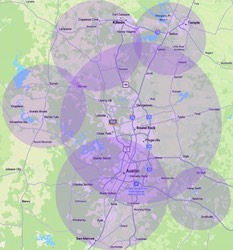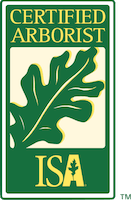Assessing Trees After Storms
You should assess your trees after storms and large weather events – like the ice storms that hit the Austin area in 2021 and 2023. Check for damage and potential safety issues, like large broken or dangling limbs. If you are concerned about damage to your mature tree, or safety issues, contact an arborist for a professional assessment.
Your trees may be just fine and survive on their own, but here are some signs to look for when assessing storm damage to your trees.
First and foremost, you’ll want to check for immediate safety concerns. Is a tree leaning to the side over your home? Are broken branches dangling over vehicles or sidewalks? If there is a safety risk, this will obviously need to be addressed as soon as possible. Be sure not to walk under a damaged tree or broken branches when conducting the assessment.
Assessment of Tree Components
There are four primary components of a tree: Roots, Trunk, Limbs, and Crown. We are going to start at the bottom and work our way up.
Damage to Tree Roots
While broken branches are the most obvious sign of major tree damage, the root system can be affected by high winds and heavy snow as well. Is your tree leaning to one side, but the trunk appears to be straight and undamaged? Are roots exposed that weren’t previously visible? Is there cracked/separated or mounded soil at the base of the tree on the opposite side of the lean? If so, these are all strong indicators that the roots of your tree may have been damaged in the storm.
Tree Trunk Damage
During severe storms, tree trunks can be bent and twisted and will sometimes develop visible cracks. The cracks can also be caused by frost and extremely low temperatures. These cracks are often between co-dominant stems, but can also appear in the middle of the trunk, in severe cases. Cracks can also develop naturally, without a storm, so it is important to regularly inspect your tree trunks. Any crack or split in a tree trunk is a serious problem and poses a safety concern, as these trees could fall at any time. If you have a tree in this condition, you should contact a certified professional immediately.
Damage to Tree Limbs
After a storm, it is common to see trees with broken or dangling limbs as well as limbs stripped of leaves. While the leaf loss is generally not a major problem, if after several days you observe dead leaves on a branch, this may be an indication of a issue. Cracked and broken branches immediately following a storm will require attention. Carefully observe all major branches for cracks. Large branches that are hanging at an angle will need to be removed as soon as possible to prevent accidents, as well as decay and other long term damage to the tree.
Damage to Tree Crown
The crown of a tree is made up of the branches, leaves and reproductive structures extending from the main stems or the trunk. If a tree suffers greater than 50% crown loss after a storm, it may not be possible to save it. But you should still have a certified arborist inspect your tree before deciding to remove it. At Good Morning Tree Service, we will give you an honest assessment and do everything we can to restore the crown of your tree, with tree removal used only as a last resort for the most severe cases.
Tree Damage Assessment
Whether your trees suffered minor damage or catastrophic loss, it is always a smart idea to consult a certified arborist. What may appear to be a minor issue can turn into a major problem. The sooner a minor issue is addressed, the better chance we have of saving your tree. If you’re concerned about a storm-damaged tree, contact A Good Morning Tree Service. Our professional arborists will help you assess the damage, and figure out the best way to care for your tree.
Free On-Site Estimates
7am – 7pm
7 days a week


